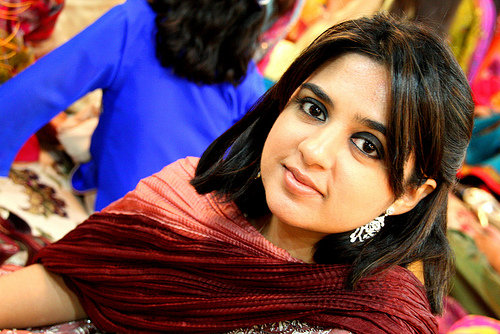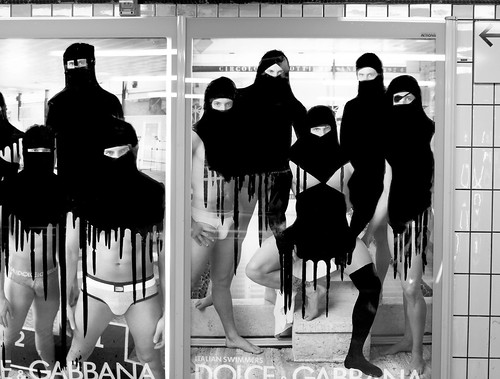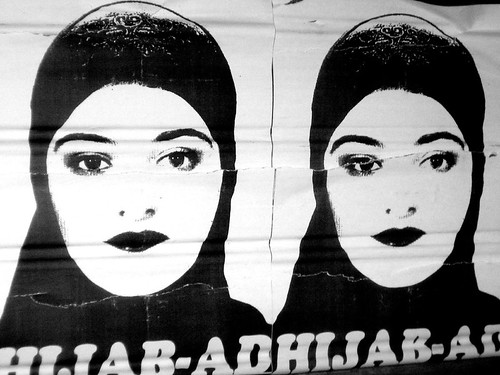
Bediha Tunadagi of Turkey competes in the Women’s 58kg Weightlifting on Day 3 of the London 2012 Olympic Games
Wearing a modified hijab wrapped tight around her head, the female Saudi Judo fighter Wojdan Shaherkani made history in less than two minutes. In her agonisingly brief moment of glory, she became the first Saudi woman to take part in Olympics. She later told reporters there that she hoped “this was the beginning of a new era.”
Indeed, the recent London Olympics 2012 hosted the most Muslim women in the games’ entire history. It is also worth mentioning that the 2012 games hosted the first Muslim female athletes from both Qatar and Brunei as well as Saudi Arabia. With this in mind, you’d be excused for thinking that Muslim women are pretty new to the Olympics but you’d be mistaken. Muslim women have been taking part in the Olympics and winning gold for decades now.
However as Sertaç Sehlikoglu who explores Muslim women’s role in sports at the University of Cambridge explains, the recent focus on female Muslim athletes wearing the hijab means that the achievements of non-hijab wearing Muslim athletes are often neglected. And yet, it is with these non-hijab wearing Muslim athletes that the legacy of Muslim women at the Olympics begins.
“Historically, Muslim women without the hijab have been involved in international games for much longer than those who do wear some form of the hijab,” explains Sertaç Sehlikoglu. “Suat Aşeni and Halet Çambel were the first Muslim women at the Olympics and they represented Turkey at the 1936 Berlin Olympics. They were personally encouraged by Ataturk who wanted to get more women involved in public life and to create a modernised and more liberal society in Turkey. Like a lot of elite women at the time in countries such as Turkey, Egypt, Tunisia and Iran they also didn’t wear the hijab.”
Aşeni and Çambel were then followed by other non-hijab wearing Muslim athletes such as Moutawakel, Boulmerka and Shouaa who all went on to win gold medals. In 1984, Nawal El Moutawakel from Morocco became the first Muslim and Arab woman to win an Olympic gold medal. Eight years later, Hassiba Boulmerka from Algeria won a gold medal at the 1992 Barcelona Olympic Games in the 1,500 metres. Ghada Shouaa from Syria also won gold at the 1996 Atlanta Olympics and is still the only Syrian to have received a gold medal till this day.
Despite these remarkable feats of athleticism, today there is focus on (the novelty of?) hijab-wearing female athletes that overlooks this history and also side-lines serious female athletes that have chosen not to wear the hijab.
“Since 9/11 there has been an unhealthy focus on the hijab to symbolise Muslim women and that has also occurred in sport,” states Sehlikoglu from the University of Cambridge. “Particularly in the international media, there is a focus on Muslim athletes wearing the hijab and that has been to the detriment of non-hijab wearing athletes. For example, there was a disproportionate focus on the Saudi athlete [Wojdan Shaherkani] who took part this year even though she was was only a blue belt in Judo and was trained by her father.”
Sehlikoglu does however acknowledge the importance of celebrating the uniqueness of hijab-wearing Muslim athletes: “The presence of hijab-wearing women at the opening ceremony was inspiring and very influential across the Muslim world… It highlights the fact that wearing a hijab shouldn’t prevent you from taking part in sport and that you can wear the hijab and be an Olympian. However, this focus on the hijab has drawn attention away from other important achievements by female Muslim athletes that we all need to celebrate.”
One example that Sehlikoglu notes is that Turkey sent more female athletes than males to the London 2012 Olympics for the first year ever. The fact that most of the female athletes didn’t wear the hijab is one major reason, she explains, why the international media didn’t make more of this. Yet we need to recognise the importance of hijabi and non-hijabi athletes and see them for what they are – sportswomen.
The history of female Muslim athletes at the Olympics didn’t start in 2004 when Ruqaya Al Ghasara from Bahrain became the first women to wear a full hijab at the Athens Games. It began in 1936 with the participation of two young Turkish women. This focus on female Muslim athletes that are ‘recognisable’ due to the hijab distracts attention away from the wider achievements of Muslim women in sports. And all female Muslim athletes that make it to the Olympics – with or without the hijab – deserve our support and applause.

Arwa Aburawa
Arwa Aburawa is a freelance journalist based in the UK with a special interest in Muslim women, the Middle East and the environment. You can follow her on Twitter @arwa_journalist or via her website http://arwafreelance.com/
More Posts

 This is where a confession comes in. When I was younger, I used to read Marie Claire, and I have vague memories of enjoying flicking through its pages—even getting excited at its coverage of Muslim women. For my masters in International Journalism, I wanted to look at the representation of Muslim women in the media, and I focused my research on the coverage of Muslim women in women’s magazines and Marie Claire in particular.
This is where a confession comes in. When I was younger, I used to read Marie Claire, and I have vague memories of enjoying flicking through its pages—even getting excited at its coverage of Muslim women. For my masters in International Journalism, I wanted to look at the representation of Muslim women in the media, and I focused my research on the coverage of Muslim women in women’s magazines and Marie Claire in particular.



 In fact, Princess Hijab asserts, her dressing up of billboards is a symbolic act of resistance meant to reassert a “physical and mental integrity” against what she calls the “visual terrorism” of advertising. Arguing that the human right of expression has been displaced by publicists, advertisers, and the machinery of capitalist, commodified culture, she offers that, “My work explores how something as intimate as the human body has become as distant as a message from your corporate sponsor.”
In fact, Princess Hijab asserts, her dressing up of billboards is a symbolic act of resistance meant to reassert a “physical and mental integrity” against what she calls the “visual terrorism” of advertising. Arguing that the human right of expression has been displaced by publicists, advertisers, and the machinery of capitalist, commodified culture, she offers that, “My work explores how something as intimate as the human body has become as distant as a message from your corporate sponsor.” Back when Princess Hijab was believed to be a Muslim, blogger Ethar El-Katatney of Muslimah Media Watch noted, “I’d actually love it if it turns out she’s not a Muslim, because it lends credibility to the idea that the dislike of being exposed to ‘visual aggression’ is not necessarily rooted in religious belief. Fed up with women being used to sell products, hijabizing ads could be a way to ‘take back’ women’s rights to their bodies.” Indeed, in Princess Hijab’s marked-up art, the headscarf is an agent not of covering but of exposure—of the oppressive nature of the advertising industry, of the displacement and disempowerment of women who are repeatedly told that they are not good, skinny, beautiful, sexy, or rich enough. It’s work that owes much more to Adbusters or No Logo than to the Taliban.
Back when Princess Hijab was believed to be a Muslim, blogger Ethar El-Katatney of Muslimah Media Watch noted, “I’d actually love it if it turns out she’s not a Muslim, because it lends credibility to the idea that the dislike of being exposed to ‘visual aggression’ is not necessarily rooted in religious belief. Fed up with women being used to sell products, hijabizing ads could be a way to ‘take back’ women’s rights to their bodies.” Indeed, in Princess Hijab’s marked-up art, the headscarf is an agent not of covering but of exposure—of the oppressive nature of the advertising industry, of the displacement and disempowerment of women who are repeatedly told that they are not good, skinny, beautiful, sexy, or rich enough. It’s work that owes much more to Adbusters or No Logo than to the Taliban.
